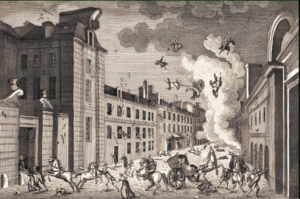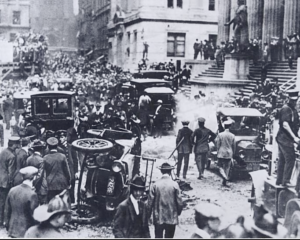I have posted before about the vehicle bomb attack in the failed attempt to assassinate Napoleon Bonaparte in Paris in 1800, details here. I have now uncovered some fascinating details about the subsequent investigation. This was an extremely high profile incident and initially focus was placed on “The Jacobins”, a political opposition to Bonaparte, or indeed the British. But I have found in the memoirs of a French dignitary details of a more thorough investigation headed by Fouche (who I have written about elsewhere).

The device used was in a container placed on a horse-drawn cart in the Rue St Nicaise. The horse that was harnessed to the bomb vehicle had been killed on the spot, but apparently was “not in the least disfigured”. Fouche, the Prefect of Police, ordered that parts of the dead horse including its head be taken to all the horse dealers in Paris to see if they recognised it. One of them indeed recognised the horse, and was able to direct the police to a specific house. The woman who “kept the door” identified the occupants who were affiliated within a particular group (the “Chouans” – a group of “Royalists” and not the Jacobins). She was also able to detail how the leader of the group had worked on something placed in a “water-carrier’s barrel” over a period of six weeks.
The leader of the group, a man called St Regent, was still in the vicinity of the bomb when it detonated, and was thrown against a post, breaking his ribs. He “was obliged to resort to a surgeon”, and the surgeon betrayed him to the police. He and an accomplice were guillotined.
In one of those fascinating parallels that I encounter occasionally on standingwellback, the VBIED attack on Wall St, New York City, in September 1920 also featured the remains of a horse as part of the investigation.

In this attack, 120 years after the Paris attack, outside the bank of JP Morgan, a horse drawn cart also exploded. In this explosion, however, the horse wasn’t left intact and was blown to bits, not least because the device contained dynamite rather than the gunpowder used in the 1800 device. The investigators were able to recover one of the hooves and took it to blacksmiths across the city. The blacksmith was eventually identified a month later but by then the investigative trail had run dry.
We sometimes assume that modern day bomb investigators are a new breed of professionals in a new industry. while me way not see many horse drawn vehicle bombs these days, the modes of investigation go an awful long way back.
